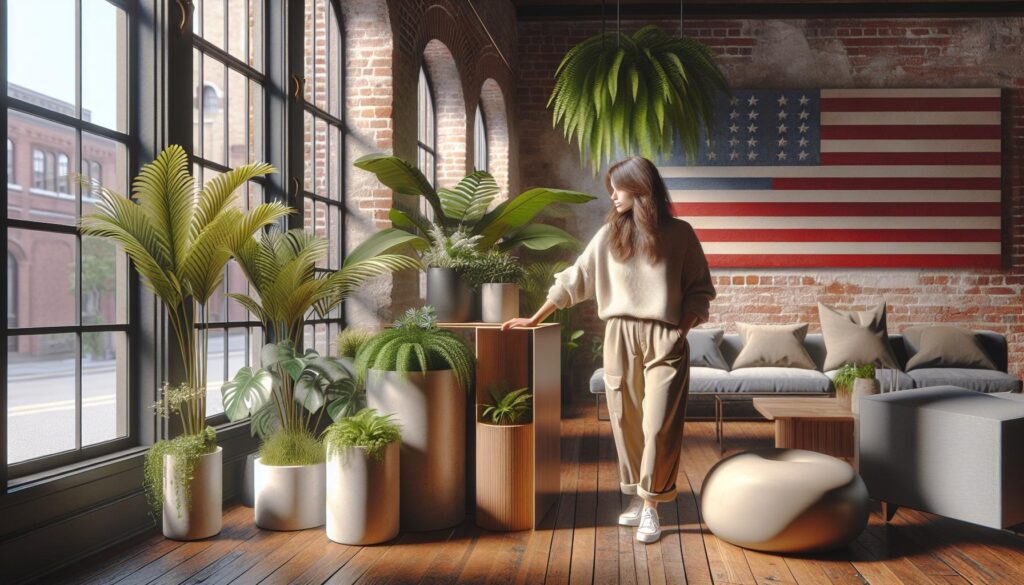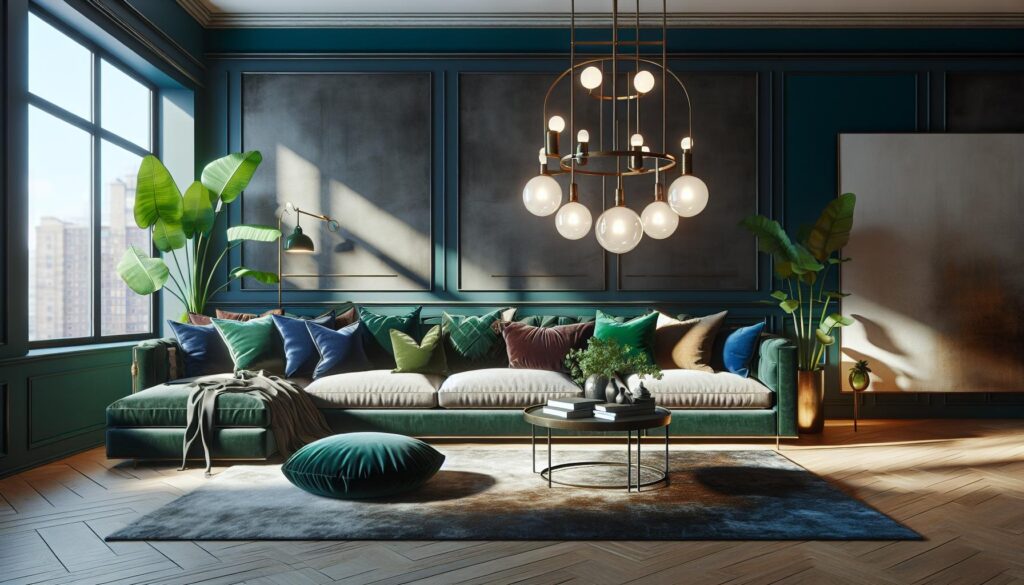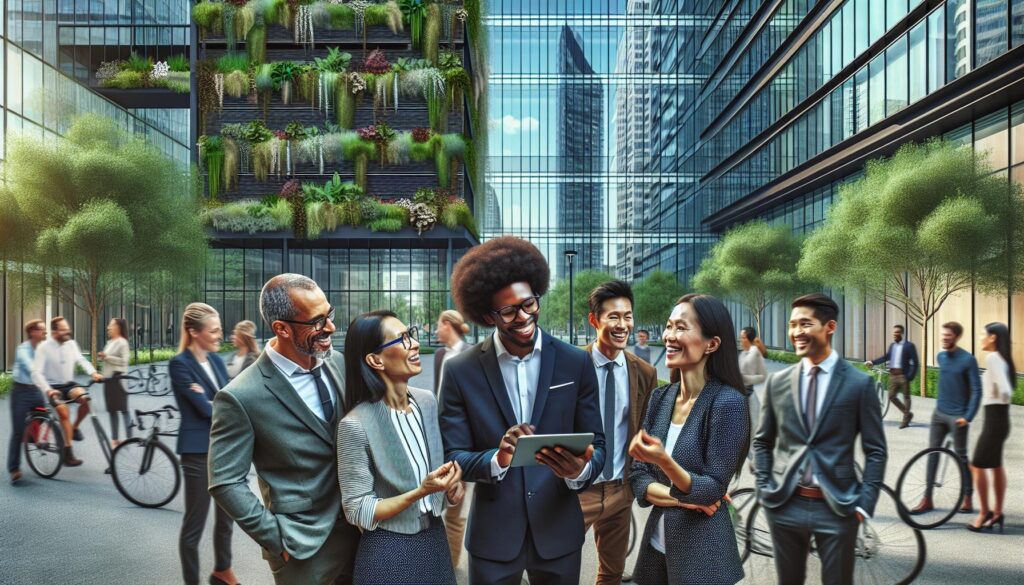In a world where interior design often clashes with architectural integrity, a new trend is emerging: the seamless blend of both. Imagine stepping into a space where the walls whisper tales of the past while the decor dances to contemporary beats. It’s not just about throwing a few trendy pillows on a couch; it’s about creating a harmonious relationship between the structure and its style.
Interior Design Trends Harmonizing with Architectural Elements
Current interior design trends emphasize the fusion of architectural elements with modern decor. Designers focus on creating spaces that reflect both the integrity of the structure and contemporary style.
Current Trends in Interior Design
Nature-inspired elements characterize many current interior design trends. Biophilic designs integrate natural materials like wood and stone, promoting wellness and tranquility. Furthermore, sustainable practices emerge as essential, incorporating eco-friendly materials and energy-efficient solutions. Bold colors and textures also generate excitement, transforming rooms into vibrant living spaces. Ultimately, these trends prioritize comfort while respecting architectural roots.
Importance of Harmonization with Architecture
Harmonization with architecture creates cohesive living environments. Mixing design styles fosters a sense of unity between interior spaces and their structural foundations. Architectural features like beams and moldings inform design choices, ensuring that decor complements essential elements. A balanced approach enhances aesthetic appeal, showcasing the beauty of both architecture and design. With careful consideration, designers unify history and modernity, enriching the overall atmosphere.
Architectural Elements Influencing Design
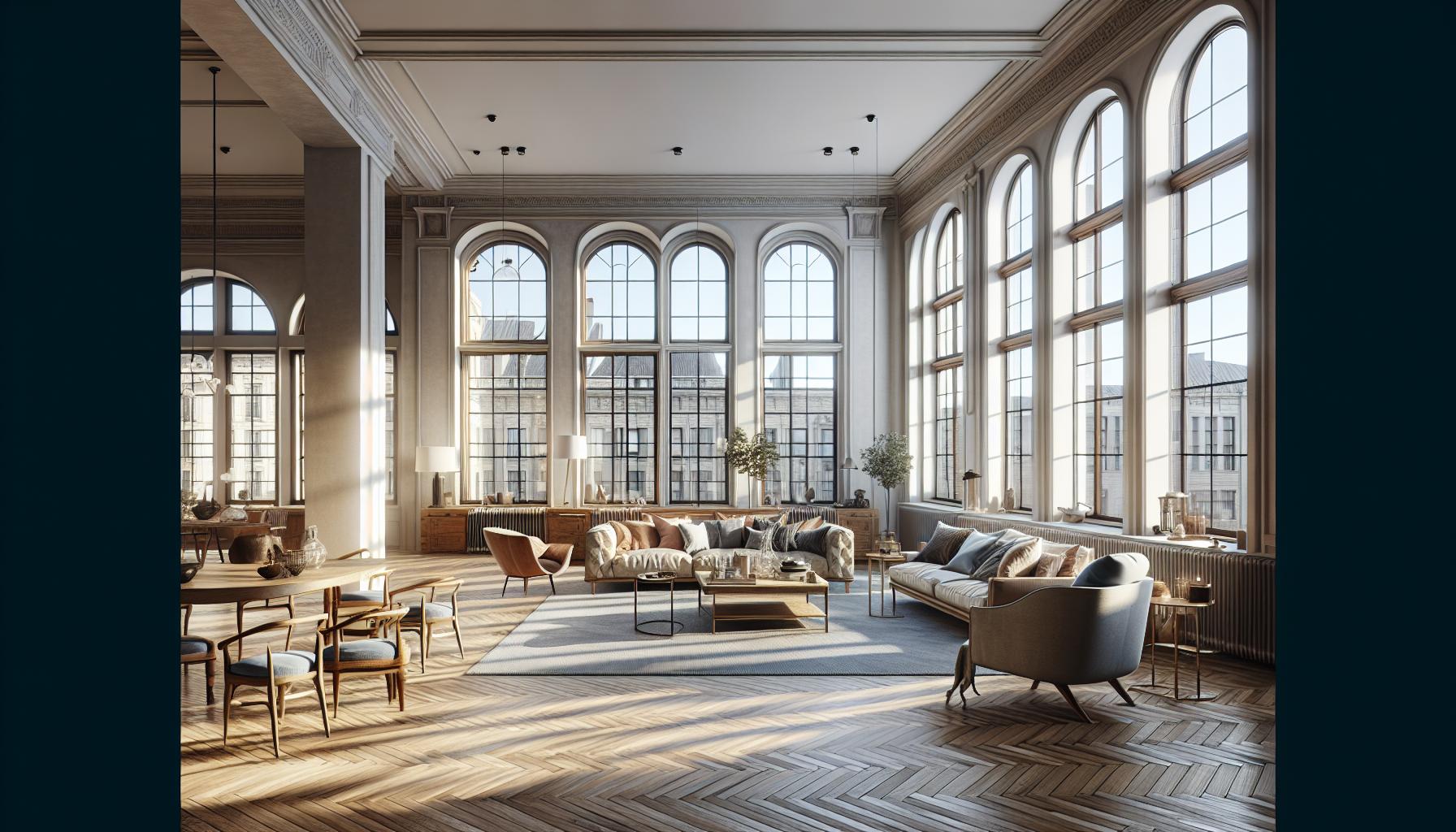
Architectural elements play a vital role in shaping interior design choices. They provide a foundation that influences both aesthetics and functionality.
Historical Architectural Styles
Historical architectural styles bring rich character to interior spaces. Influenced by periods such as Victorian and Art Deco, these styles incorporate distinctive moldings, ornate details, and unique materials. Designers often celebrate these features by using period-specific furnishings and color palettes. Integration encourages harmony between old and new, ensuring contemporary elements complement historical features. For example, pairing vintage furniture with modern accents enhances the overall ambiance. Incorporating historical flooring such as herringbone wood can also ground a space, adding a touch of elegance. By honoring past design traditions, designers evoke a sense of continuity and depth in interior spaces.
Modern Architectural Features
Modern architectural features emphasize clean lines and open spaces, creating an inviting atmosphere. Large windows, for instance, flood interiors with natural light while connecting indoor and outdoor environments. Minimalist designs often prioritize functionality, allowing for adaptable spaces that meet various needs. Incorporating materials like steel and glass adds a sleek, contemporary touch. These elements, when paired with soft furnishings, strike a balance between comfort and modernity. Designers frequently use open floor plans to promote flow and transparency, allowing spaces to feel larger. Blending these features with thoughtful decor enhances the overall harmony, showcasing how contemporary design can effectively highlight architectural integrity.
Key Trends in Harmonization
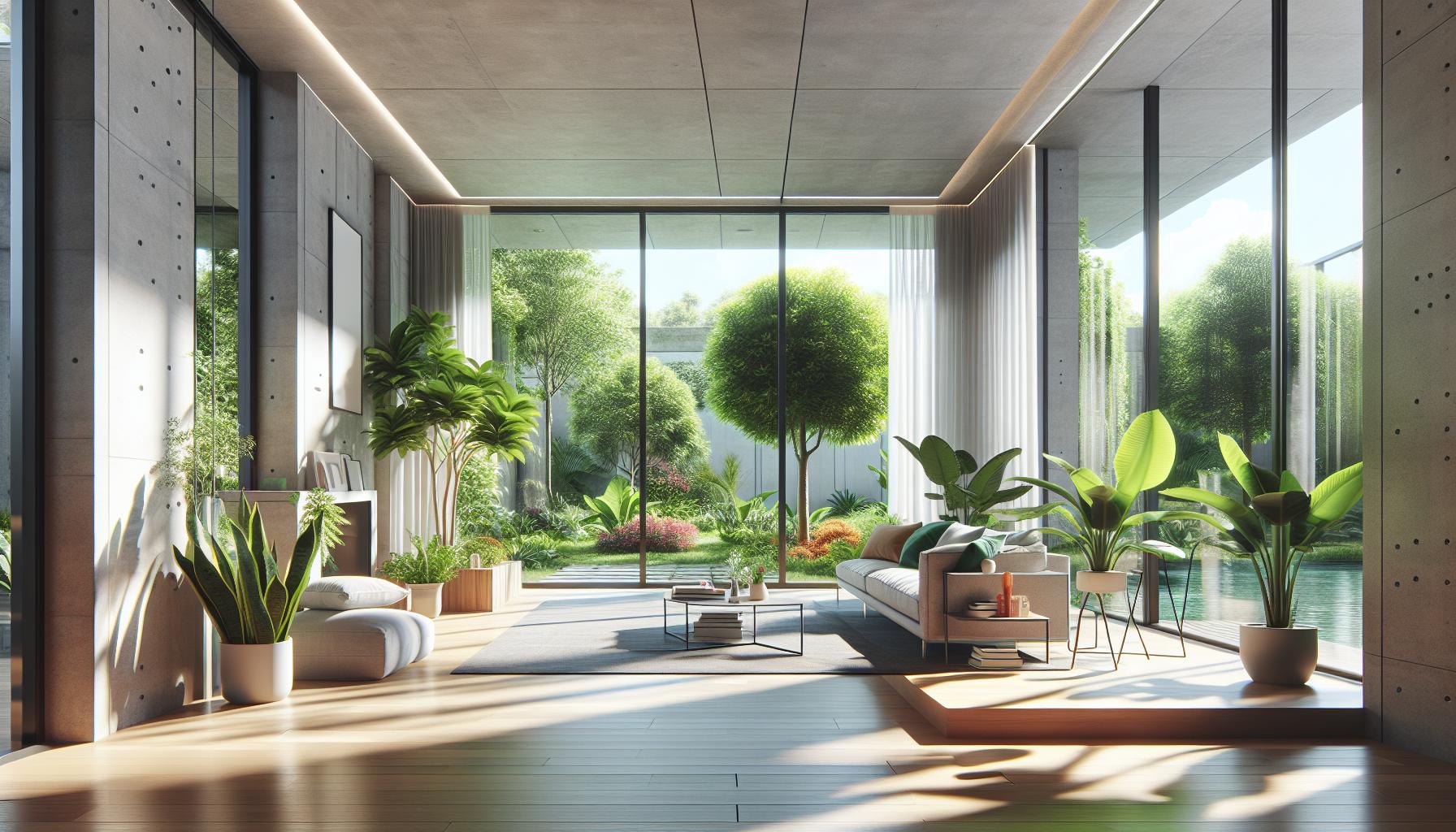
Architectural features now seamlessly blend with interior design choices, enhancing both style and function. Current trends emphasize a deeper connection between nature and living spaces.
Biophilic Design
Biophilic design integrates natural elements into interiors. Plants, water features, and natural light create a sense of tranquility. Designers prioritize sustainability by using organic materials like wood and stone. Spaces often feature large windows to invite outdoor views, blurring the lines between inside and outside. This design approach promotes wellness and improves air quality. Integrating green walls and indoor gardens fosters a healthier environment, enhancing aesthetics while contributing to mental well-being. Creating a harmonious flow helps build a cohesive atmosphere throughout living spaces.
Minimalism and Maximalism
Minimalism emphasizes simplicity and functionality in design. Cleans lines and open spaces characterize this approach, allowing architectural features to stand out without distraction. Color palettes often lean towards neutral tones to maintain an uncluttered aesthetic. Conversely, maximalism embraces bold patterns and vibrant colors. This trend encourages layering textures and mixing styles, creating captivating environments. Maximalism respects historical details while celebrating individuality through eclectic furnishings. Combining these styles, designers achieve a balance that honors both the architectural integrity of the space and the personality of its inhabitants.
Case Studies of Successful Harmonization
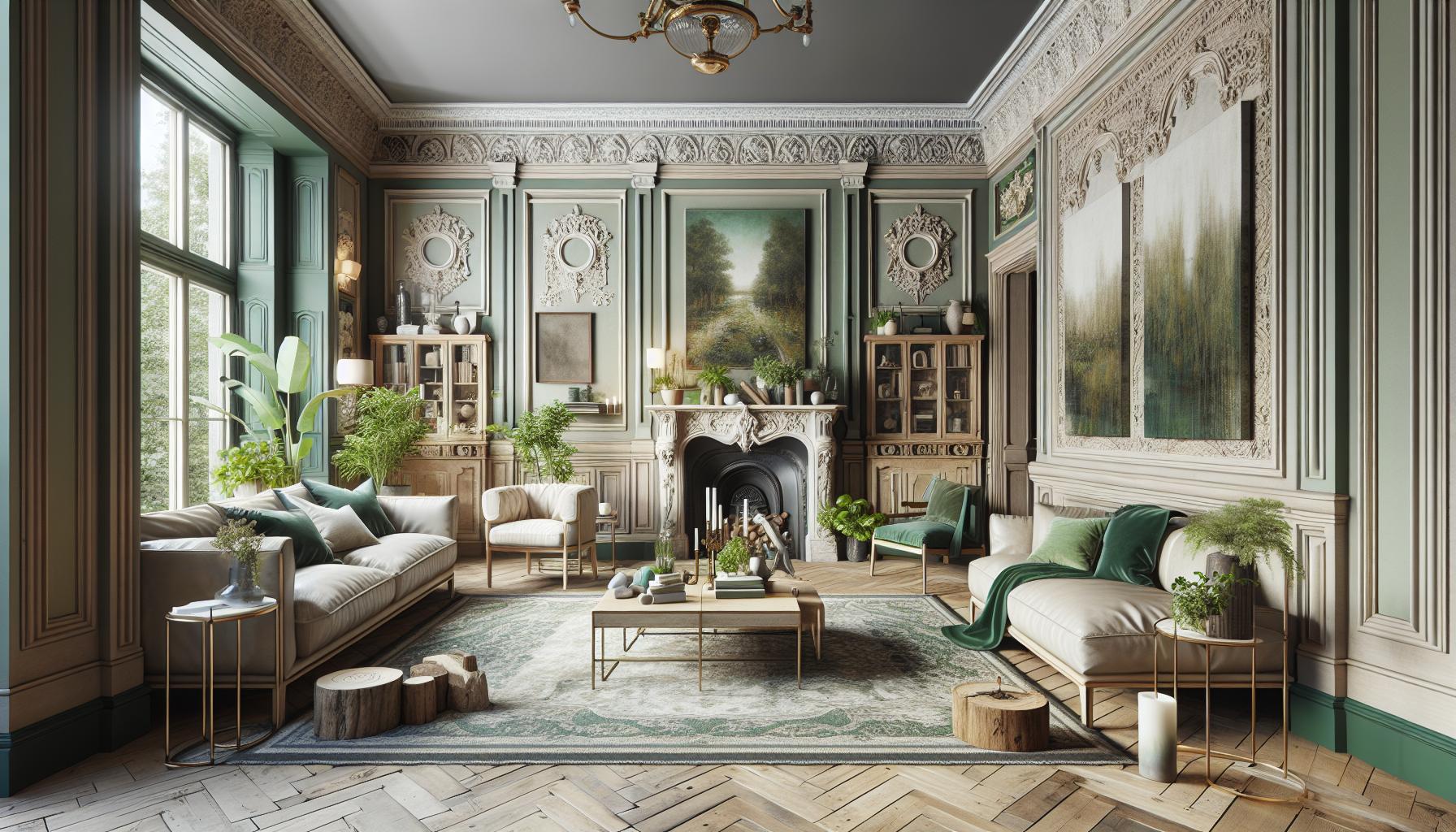
Successful harmonization showcases the seamless integration of architectural and interior design elements. Various examples illustrate how these principles come to life in both residential and commercial spaces.
Residential Spaces
In a recent renovation of a Victorian home, designers maintained the original moldings while incorporating modern furnishings. Rich colors and textures complement the inherent charm of the architecture. By blending period-specific pieces with contemporary art, the space reflects a unique personality. Natural materials, such as reclaimed wood and stone, enhance the connection to nature while promoting sustainability. The result demonstrates how historical integrity can coexist beautifully with modern aesthetics, fostering a warm living environment that resonates with its inhabitants.
Commercial Spaces
A contemporary office designed within a historic warehouse offers another compelling example. Exposed brick walls harmonize with sleek metal accents, creating an inviting yet professional atmosphere. This space utilizes open layouts to encourage collaboration while maintaining the character of the original structure. Innovative lighting fixtures enhance the architectural features, ensuring that function and style coexist. Sustainable practices, like the use of recycled materials in furniture, further illustrate the commitment to eco-friendly design, showing how businesses can embrace their architectural roots while promoting a modern, vibrant workplace.
Future Directions in Interior Design
Embracing future directions in interior design reveals a growing commitment to harmonizing aesthetics with functionality and sustainability.
Sustainable Practices
Sustainable practices in interior design focus on eco-friendly materials and energy-efficient solutions. Designers prioritize incorporating reclaimed wood, bamboo, and natural stone to reduce environmental impact. Choosing low-VOC paints and recycled furnishings minimizes harmful emissions. Using sustainable fabrics like organic cotton and linen offers comfort while supporting organic farming. Also, energy-efficient lighting options, such as LED bulbs, enhance aesthetic appeal and lower electricity consumption. Implementing efficient insulation not only conserves energy but also improves indoor comfort. Additionally, biophilic design principles integrate plants, which purify the air and promote well-being. These methods foster an environment that respects natural resources and taps into the trend of wellness-centric living.
Technological Integration
Technological integration transforms interior design by enhancing convenience and efficiency. Smart home systems control lighting, temperature, and security, creating tailored living experiences. Designers implement app-controlled features that allow users to adjust settings easily. Also, augmented reality tools enable clients to visualize spaces before making design decisions. Virtual reality showcases various styles, providing immersive experiences to explore different design concepts. Home automation optimizes energy use, delivering cost savings while preserving comfort. Additionally, sustainable innovations like solar panels boost energy independence and promote eco-friendly living. This blend of technology and design not only elevates functionality but also aligns with contemporary lifestyles.

